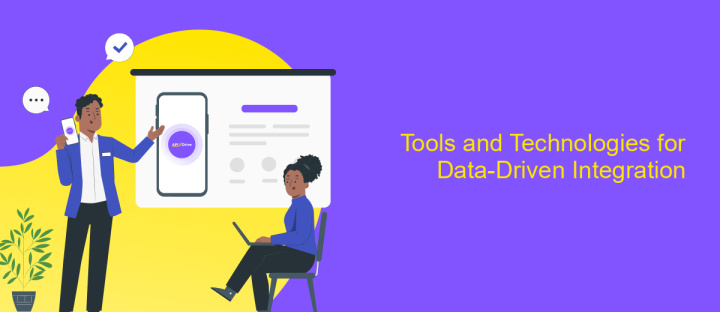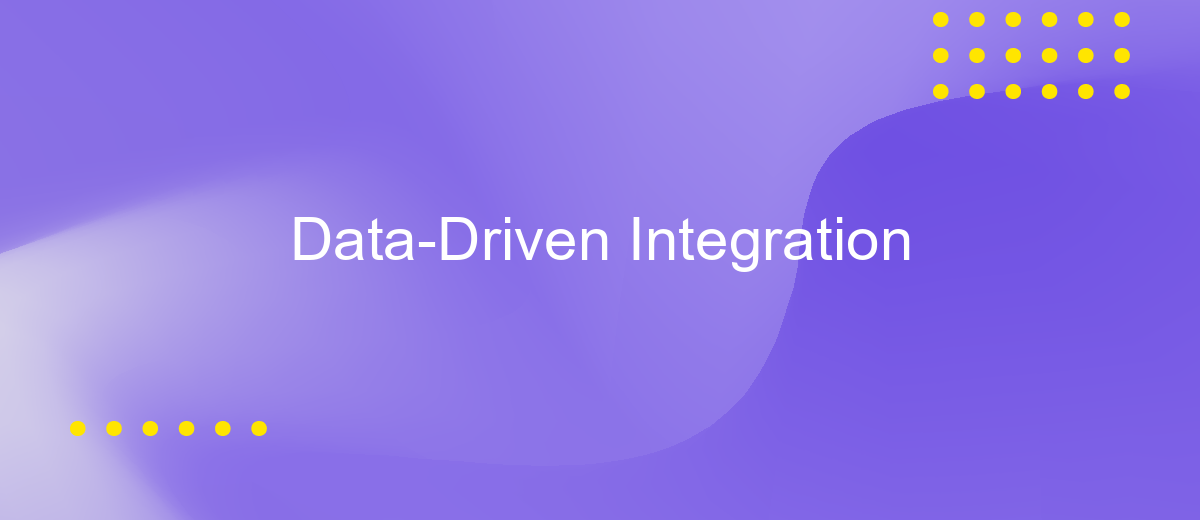Data-Driven Integration
In today's digital era, data-driven integration has become a cornerstone for businesses seeking to enhance efficiency and innovation. By seamlessly merging diverse data sources, organizations can unlock valuable insights, streamline operations, and make informed decisions. This approach not only fosters agility and adaptability but also empowers companies to stay competitive in a rapidly evolving market landscape. Discover how data-driven integration is transforming industries and shaping the future.
Understanding Data-Driven Integration
Data-driven integration is a strategic approach that emphasizes the use of data as the central element in integrating various systems and processes. It enables organizations to harness the power of data to improve decision-making, enhance operational efficiency, and create seamless workflows. By focusing on data, businesses can ensure that their systems are not only interconnected but also capable of sharing and utilizing information effectively.
- Improved data accuracy and consistency across systems.
- Enhanced decision-making through real-time data insights.
- Streamlined operations by automating data flows.
- Reduced redundancy and errors in data management.
- Increased agility and adaptability to changing business needs.
By leveraging data-driven integration, organizations can break down silos and foster a more collaborative environment. This approach not only supports the alignment of IT and business goals but also encourages innovation by providing a comprehensive view of data across the enterprise. Ultimately, data-driven integration serves as a foundation for building a more responsive and data-centric organization, capable of thriving in today's fast-paced digital landscape.
Key Principles and Benefits

Data-driven integration is centered around the strategic use of data to streamline processes and enhance decision-making across an organization. One of the key principles is the seamless connectivity between disparate systems, enabling a unified data flow. This connectivity is achieved through APIs and other integration tools that facilitate real-time data exchange. By establishing a robust integration framework, organizations can ensure data accuracy, reduce redundancy, and enhance operational efficiency. Additionally, the integration process should be scalable and adaptable to accommodate evolving business needs and technological advancements.
The benefits of data-driven integration are manifold. It enables organizations to harness the full potential of their data, leading to improved insights and informed decision-making. By automating data workflows, businesses can significantly reduce manual errors and free up resources for more strategic tasks. Services like ApiX-Drive play a crucial role by offering user-friendly solutions to set up and manage integrations effortlessly. This not only saves time but also lowers the barrier for non-technical users to participate in data integration processes, thereby democratizing data-driven strategies within the organization.
Building a Data-Driven Integration Strategy

To build a successful data-driven integration strategy, organizations must first understand their data landscape and integration needs. This involves assessing current data sources, identifying key stakeholders, and determining business objectives. A comprehensive analysis of existing data flows and integration points will provide a foundation for strategic planning. By aligning integration goals with business outcomes, organizations can ensure that their data initiatives support broader organizational objectives.
- Conduct a thorough data audit to identify all data sources and their current integration status.
- Engage stakeholders from different departments to gather insights and align on integration objectives.
- Define clear business outcomes that the data-driven integration strategy aims to achieve.
- Choose the right integration tools and technologies that fit the organization's needs and capabilities.
- Implement a robust data governance framework to ensure data quality and compliance.
Once the strategy is in place, it is crucial to continuously monitor and adapt it to evolving business needs and technological advancements. Regular reviews and updates will help maintain alignment with business goals and ensure the integration strategy remains effective. By fostering a culture of data-driven decision-making, organizations can leverage their data assets to drive innovation and competitive advantage.
Tools and Technologies for Data-Driven Integration

Data-driven integration is a crucial aspect of modern business operations, enabling seamless connectivity between disparate systems and data sources. The choice of tools and technologies plays a vital role in ensuring efficient data integration, facilitating data flow, and enhancing data quality. Organizations must select the right set of tools to meet their specific integration needs, considering factors such as scalability, ease of use, and compatibility with existing systems.
Several tools and technologies are commonly used for data-driven integration. These tools help automate processes, reduce manual intervention, and ensure real-time data availability. They also support data transformation, cleansing, and enrichment, which are essential for maintaining data integrity.
- ETL Tools: Extract, Transform, Load tools like Apache Nifi and Talend streamline data processing.
- API Management Platforms: Tools like MuleSoft and Apigee facilitate API creation and management.
- Data Integration Platforms: Solutions like Informatica and Microsoft Azure Data Factory offer comprehensive integration capabilities.
- Cloud-based Services: AWS Glue and Google Cloud Dataflow provide scalable data integration in the cloud.
In conclusion, selecting the right tools and technologies for data-driven integration is essential for achieving seamless data connectivity and operational efficiency. By leveraging these technologies, organizations can harness the full potential of their data, driving informed decision-making and business growth.
Real-World Applications and Case Studies
Data-driven integration has found widespread application across various industries, revolutionizing how businesses operate and make decisions. In the healthcare sector, data-driven integration enables seamless sharing of patient information across different platforms, improving patient care and operational efficiency. In retail, companies leverage integrated data systems to optimize supply chain management, personalize marketing efforts, and enhance customer experiences. Financial institutions use data-driven integration to detect fraud, assess risks, and streamline transactions, ensuring rapid and secure services.
A notable case study is the implementation of data-driven integration in logistics, where companies like ApiX-Drive facilitate seamless connectivity between disparate systems. By automating data transfer and integration processes, ApiX-Drive allows logistics firms to synchronize inventory data, track shipments in real-time, and improve delivery accuracy. This integration not only reduces operational costs but also enhances customer satisfaction by providing timely and accurate information. Such real-world applications demonstrate the transformative potential of data-driven integration in enhancing business operations and driving growth.
FAQ
What is data-driven integration?
Why is data-driven integration important for businesses?
How can data-driven integration improve decision-making?
What are some common challenges in implementing data-driven integration?
How can businesses simplify the process of data-driven integration?
Apix-Drive is a universal tool that will quickly streamline any workflow, freeing you from routine and possible financial losses. Try ApiX-Drive in action and see how useful it is for you personally. In the meantime, when you are setting up connections between systems, think about where you are investing your free time, because now you will have much more of it.

